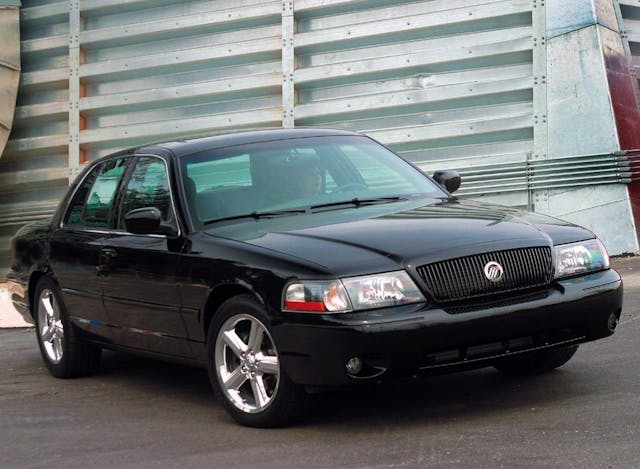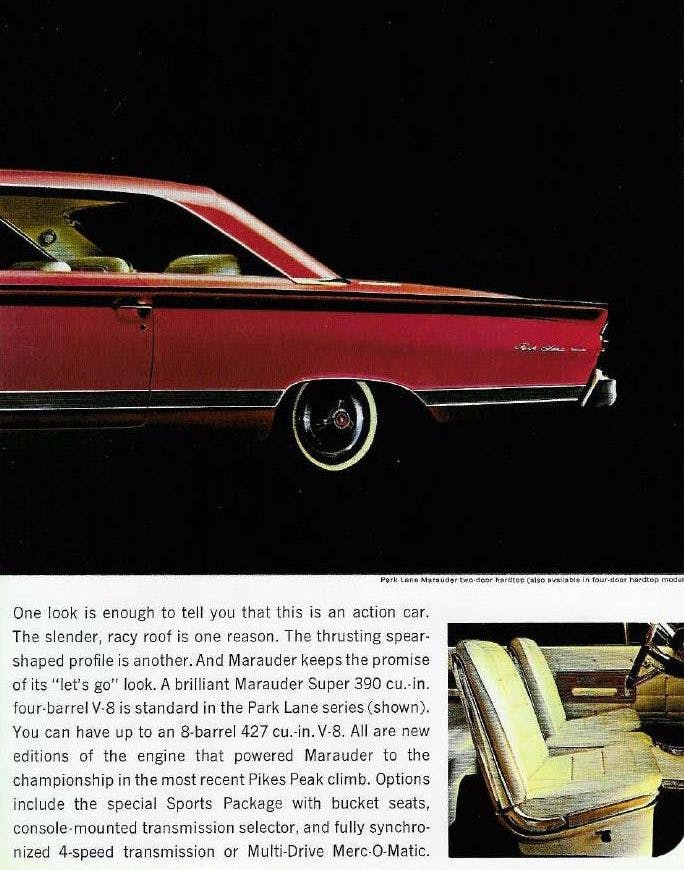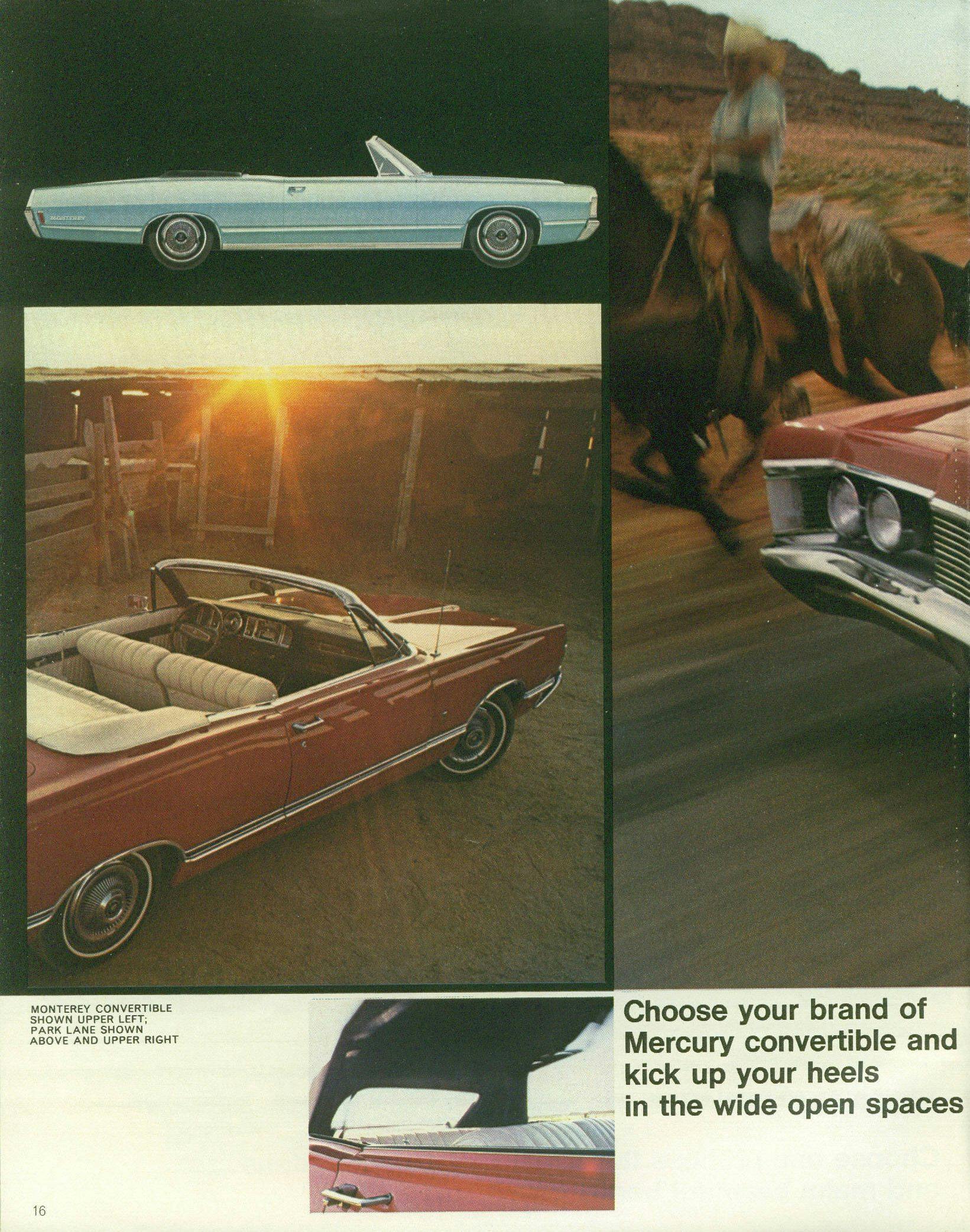Mercury’s Marauder was classic marketing, but there was plenty of muscle
Mercurys can be so confusing! What started out as a brand to fill in the gap between Ford and Lincoln-Zephyr for 1939 evolved into a confusingly-positioned marque that met its bitter end in 2011.
Equally befuddling was Mercury’s flexible usage of the Marauder name. Many automotive enthusiasts often use the name to describe a specific model, but the truth is that the Marauder name was most often used for marketing purposes on various engines and sub-models. To set the record straight for would-be Mercury historians, here’s a chronological history of the Marauder, excluding the 21st-century reboot:
1958

When the 1958 Mercury was introduced, it was in its second year of its styling cycle, but its engines were all-new. As part of the “MEL” series (Mercury-Edsel-Lincoln), these engines were given Marauder designations: 312-horsepower Marauder (383 cu-in), 330-horse Marauder (383 cu-in), and 360-horse Marauder (430 cu-in). Midyear changes brought the 400-horsepower Super Marauder (430 cu-in) with three two-barrel carburetors.
1959

After swinging for the fences, Mercury decided not to continue with the Super Marauder for 1959. Additionally, higher-spec 383 and 430 Marauders’ output was downgraded to 322 and 345 horsepower, respectively.
1960

The downgrading continued into 1960, as the Marauder 383 peaked at 280 horsepower and the Marauder 430 was down to 310 hp with a two-barrel carb. Market positioning was adjusting accordingly; the Monterey was now advertised as being cheaper than a V-8 Impala and Fury.
1961

Despite being distinct vehicles under the FoMoCo umbrella just a few years before, full-size Mercurys for 1961 were little more than tarted-up Fords. If that wasn’t clear simply by looking at one, then the newly available Super-Economy “6” made it obvious. Additionally, the full-size model lineup was renamed Meteor 600, Meteor 800, and Monterey. More interesting was a new “FE” series of engines that had been used in Fords since 1958: the Marauder 352 and Marauder 390, the latter with 300 horsepower.
1962
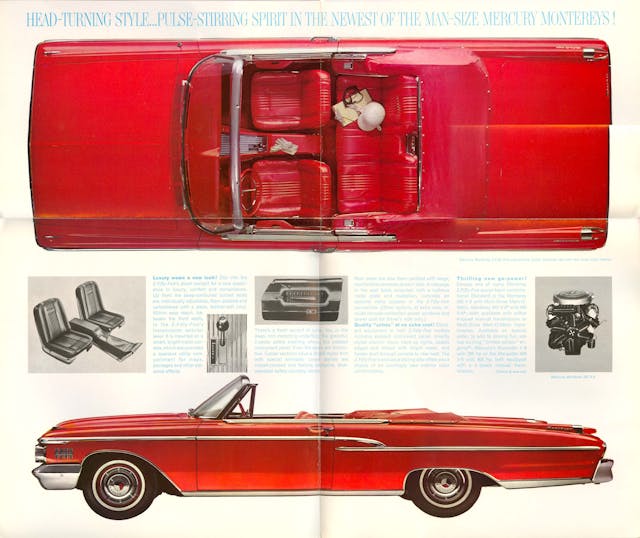
For 1962, excitement appeared to make a comeback in full-size Mercurys. The Meteor name was transferred to a new mid-size model, while the full-size Monterey added the Monterey Custom and the S-55 buckets-and-console package that gave a sporty flavor to the full-size series. However, the only engine to receive the Marauder name was the new 406-cu-in V-8, available with 385 horsepower (single four-barrel carb) or 405 horsepower (triple two-barrel carbs).
1963

For 1963, full-size Mercurys continued their trajectory back toward that of a true medium-priced marque. Every engine, now exclusively FE big-blocks, was called Marauder: Marauder 390 (250 horsepower with a two-barrel), Marauder Super 390 (300 horsepower with a four-barrel), Marauder 406 (385 horses), and Marauder Super 406 (405 horses).
Mid-year brought two very important updates to the Mercury fold: a 427 (to replace the 406), and a semi-fastback roofline. The Marauder 427 put out 410 horsepower with a four-barrel, with the Marauder Super 427 giving 425 horses courtesy of another four venturis. The new roofline added contemporary style, with Mercury marketing the body style as a sub-model called the Marauder. As such, buyers could choose from the Monterey Custom-based Marauder and the Marauder S-55.
1964
Mercury returned to the Monterey/Montclair/Park Lane hierarchy for the first time since 1960. Marauder styling, available in all three models, was expanded to the four-door hardtop. Engines continued as before: Marauder 390, Marauder Super 390, Marauder 427, and Marauder Super 427, plus a new Marauder Interceptor 390 rated at 330 horsepower with mechanical lifters.
1965

Full-size Mercurys were marketed as “…in the Lincoln Continental Tradition.” Perhaps this luxury bent was the reason why the slick Marauder hardtop roofline was not emphasized in the literature, but nonetheless the Marauder nameplate and racing flag were placed on C-pillars. Marauder engines were a repeat as before, with the exception of the discontinued Marauder 427.
1966
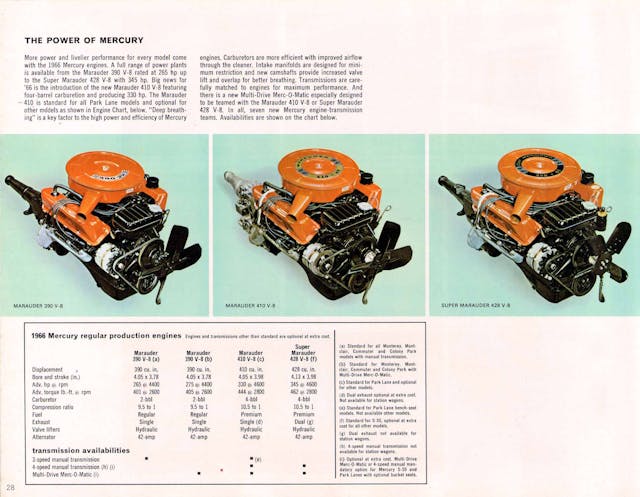
The Marauder sub-model disappeared for ’66, but there was new Marauder action on the engine front. The Marauder Super 390 was replaced by the new Marauder 410 with 330 horsepower and a four-barrel carburetor. Also new was the 345-horse Super Marauder 428, which was showcased in the revived S-55 but available for other full-size models, too.
1967

The Marauder 390, Marauder 410, and Super Marauder 428 lived on into 1967, while a 390 four-barrel returned as the 320-horsepower Marauder 390 GT. Unlike the earlier Marauder Super 390, this engine was only available on the Cyclone GT and brand-new Cougar, and exempt from the full-size Mercury series.
1968
More adjustments hit the Marauder series engines for 1968. The Marauder 390 was available for all mid-size Mercurys, plus several full-size models. Another 390 two-barrel, the high-compression 280-horsepower Marauder 390P, became available for Cougars and some full-sizers. The Marauder Super 390 returned after an absence, now rated at 315 horsepower and available for all full-size models. The Marauder 390 GT, available on all Cougars and mid-size models, received a bump to 325 horses. Top engine for full-size models was the 340-horse Super Marauder 428, which lost five horsepower for 1968.
1969–70
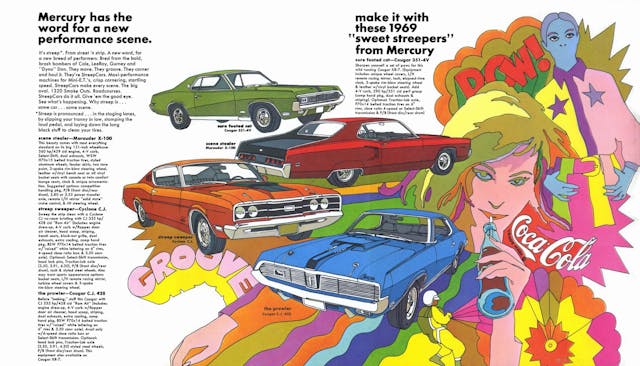
Finally, a real Marauder! With the redesigned 1969 full-size Mercury, product planners introduced an honest-to-goodness Marauder model with a unique fastback body style. Front-end styling was shared with the upmarket Marquis. Two models were available: Marauder and Marauder X-100. The former came standard with a 390 two-barrel but an all-new 429 was available in both two-barrel and four-barrel iterations (the latter good for 360 horsepower). The X-100 came standard with the 429 four-barrel and a unique matte “sports tone” finish on the trunk tunnel area (optional for the base Marauder).
Perhaps to eliminate confusion for the dawn of Mercury’s honest-to-goodness Marauder model for 1969, all of the marque’s engines dropped their Marauder nomenclature. The Marauder continued with few changes for 1970 (primarily fewer features and less distinction) and then was discontinued.
The 1994–96 Chevrolet Impala SS may have raised the pulse of full-size enthusiasts, but FoMoCo did not respond until the following decade with a hot take on the Grand Marquis. The Marauder was produced only for the 2003-04 model years, featuring a 302-horsepower 4.6-liter DOHC V-8, but the end result left some enthusiasts wanting as mid-15s were the best the Merc could run. Nonetheless, it looked the part thanks to monochromatic trim, performance-tuned suspension, and a unique interior. Originally predicted to sell 18,000 units a year, Mercury sold 11,052 Marauders through 2004.
